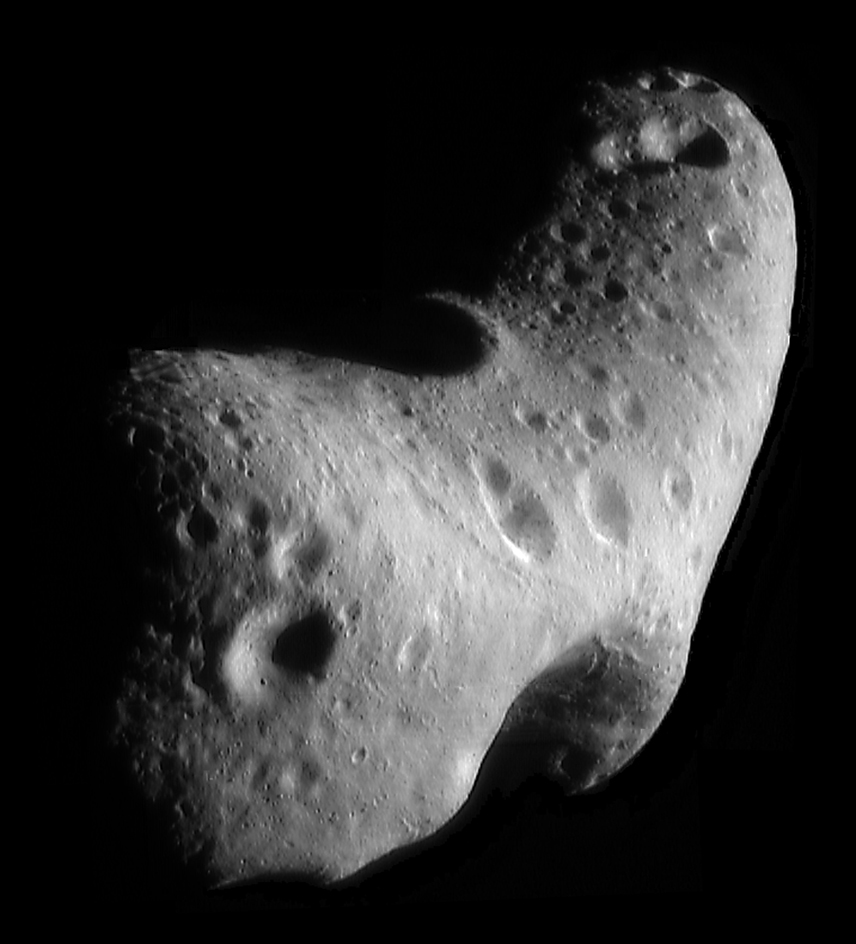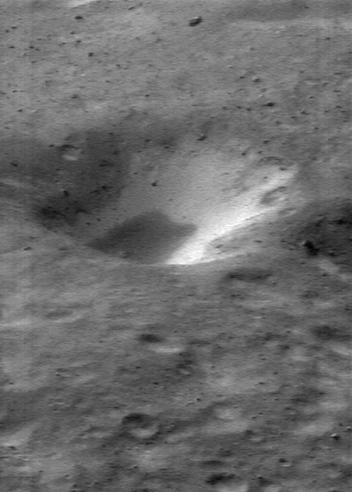Eros is one of the largest of the asteroids that come close to Earth. Eros’s distance from the sun ranges from 105 million to 166 million miles (169 million to 267 million kilometers)—1.13 to 1.78 times Earth’s average distance from the sun. The asteroid completes one orbit around the sun every 1.76 Earth years. Eros’s orbit crosses that of Earth, but scientists estimate that Eros has only a tiny chance of hitting Earth in the next 100 million years.


Eros is shaped like a potato, and it is 21 miles long, 7 miles wide, and 7 miles high (34 by 11 by 11 kilometers). It is made up of rocky material. The average density of Eros is 2.67 grams per cubic centimeter, slightly less than half that of Earth. Eros’s low density suggests that about 30 percent of the asteroid’s volume consists of crevasses and cracks. Eros spins end-over-end, rotating once every 5 hours 16 minutes. Areas of the surface in sunlight have a temperature of about 210 °F (100 °C), while areas in darkness are as cold as –240 °F (–150 °C).
Impacts of meteorites and other asteroids have created countless craters on Eros, and have broken the surface into a network of cracks and troughs. Strewn across the surface are boulders that range from the size of a chair to the size of a house.
The German astronomer Gustav Witt and the French astronomer August H. P. Charlois independently discovered Eros in 1898. The space probe NEAR Shoemaker went into orbit around the asteroid in 2000 and landed on it in 2001.
